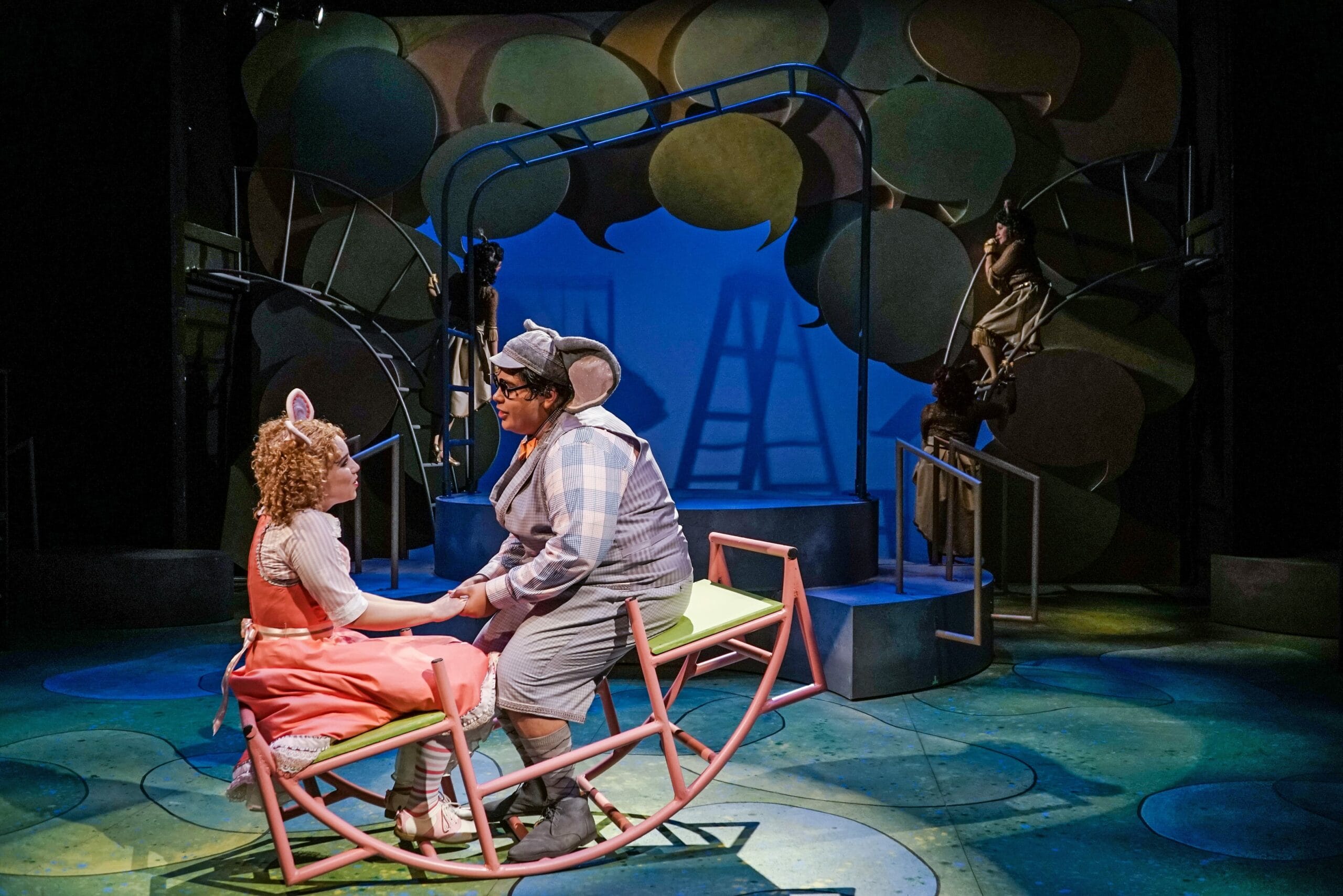Dive into the heartwarming world of Elephant & Piggie! Join Gerald and Piggie on their silly and thought-provoking adventures. From their silly misunderstandings to their unbreakable friendship, these beloved characters ignite a love of reading in young minds. Learn how these books foster emotional intelligence, encourage creativity, and spark meaningful conversations. Discover the secrets behind their enduring popularity and peek into the creative genius that brought them to life. Let’s embark on a literary journey that proves the power of storytelling to transform everyday moments into extraordinary ones.
Discovering the Delightful Duo: Piggie and Gerald
Piggie and Gerald, sometimes called Elephant & Piggie, are more than just characters; they’re practically best friends you haven’t met yet. Created by Mo Willems, these easy-to-read books are heartwarming and humorous, perfect for young readers and anyone who loves a good chuckle. Beyond the silly antics, these stories offer valuable lessons about friendship, understanding, and navigating social situations.
Why We Love Piggie and Gerald
Piggie, enthusiastic and sometimes impulsive, and Gerald, cautious and thoughtful, are a dynamic duo. Their contrasting personalities make their friendship captivating, teaching kids that it’s okay to be different. This resonates with young readers as it reflects their experience with the diverse personalities they encounter in their own lives. This likely fosters acceptance and celebrates the richness that comes from diverse friendships.
The Educational Value of Piggie and Gerald
These humorous books offer substantial learning opportunities. They may help children expand their vocabulary and improve reading skills organically. The stories frequently present problems that Piggie and Gerald solve together, modeling critical thinking and teamwork. This subtle approach to education probably contributes to the books’ widespread appeal in both homes and classrooms. Readers can check out these pledge scavenger hunt ideas for fun activities to further enhance learning.
Exploring Timeless Themes
Piggie and Gerald’s world is simple, but the themes are timeless: acceptance, loyalty, and understanding. The books encourage children to consider different perspectives, demonstrating how misunderstandings occur and how to resolve them. This focus on social-emotional learning aligns with current educational trends that emphasize the importance of emotional intelligence.
Mo Willems: The Creative Genius
Mo Willems isn’t just an author and illustrator; he understands what makes kids tick. His expressive characters and signature squiggly lines are instantly recognizable. His frequent interaction with the reader, breaking the fourth wall, further engages children, making them feel like part of the story. You can discover more about Willems’s artistry by exploring the poem hidden in the Immortals portrait.
Building Your Piggie and Gerald Collection
With over 25 books, there’s a Piggie and Gerald adventure for everyone. Popular titles include “We Are in a Book!,” “There Is a Bird on Your Head!,” and “I Will Take a Nap!” These stories blend silliness and substance, available in various formats from hardcover and paperback to ebooks and audiobooks.
| Title | Theme(s) | Likely Reader Reaction |
|---|---|---|
| “We Are in a Book!” | Reading, friendship, breaking the fourth wall | Giggles and a desire to read it again and again! |
| “There Is a Bird on Your Head!” | Problem-solving, acceptance, friendship | Lots of pointing and laughter at the silly bird. |
| “I Will Take a Nap!” | Humor, anticipation, unexpected events | Quiet smiles and maybe a yawn or two! |
| “Can I Play Too?” | Inclusion, friendship, understanding differences | Thoughtful nods and a desire to play along. |
| “Let’s Go for a Drive!” | Imagination, planning, friendship | Excitement and a desire for their own adventures. |
Why These Books Matter
In a complex world, Piggie and Gerald offer a simple reminder of the importance of kindness, laughter, and friendship. They show us that even small moments can be joyful and that diverse individuals can create something special together.
Analyzing the Elephant & Piggie Target Audience
These charming tales are crafted for younger readers, typically preschool through second grade (ages 4-8). The sweet spot is probably around ages 6-8, when children begin reading independently.
Reading abilities vary, so consider reading levels. Elephant & Piggie stories typically fall within Guided Reading Levels G through I, AR scores between 0.5 and 1.4, and Lexile levels around 140L to 210L. These are guidelines, and each child develops at their own pace.
Mo Willems created stories that match the developing minds of young readers. The simple yet engaging vocabulary, conversational style, and clear format with expressive illustrations support early literacy skills, including phonics, sentence structure, and storytelling. The books also weave in social-emotional lessons about accepting differences and managing feelings.
| Feature | Description |
|---|---|
| Ideal Age Range | 4-8 years old |
| Optimal Age | 6-8 years old (for beginning readers) |
| Grade Level | Pre-K – 2nd Grade |
| Reading Level | Guided Reading Levels G-I, AR Scores 0.5-1.4, Lexile Levels 140L-210L |
| Benefits | Develops early literacy skills, promotes social-emotional learning, and cultivates a love of reading. |
These age and reading level suggestions are not rigid. The most important thing is to nurture a love of reading. Even older siblings and parents can enjoy these escapades.
Decoding the Piggie and Gerald Books: Reading Levels and More
These books are popular because they’re funny, engaging, and easy to follow, while still building crucial literacy skills. They generally fall within a guided reading level of G-I, suitable for beginner readers decoding words and understanding simple sentences. As levels progress, stories may become slightly longer and vocabulary richer, but remain manageable for emerging readers.
Elephant & Piggie books typically have Lexile levels between 140L and 210L, and AR scores from 0.5 to 1.4. These metrics suggest suitability for pre-K through second grade. Some second graders might use them for independent reading, while others might enjoy them as read-alouds. These leveling systems provide a framework, but remember that every child learns differently.
Beyond reading, Elephant & Piggie promotes social-emotional learning (SEL). The stories introduce concepts like friendship, empathy, and problem-solving. Kids learn to handle disagreements and misunderstandings, valuable lessons for everyone. The books also aid language development through snappy, expressive dialogue and varied font sizes and styles that convey emotion.
| Feature | Description |
|---|---|
| Guided Reading Level | G-I |
| Lexile Level | 140L-210L |
| Accelerated Reader (AR) | 0.5-1.4 |
| Suitable For | Pre-K through Second Grade |
| Benefits | Reading skills, social-emotional learning (friendship, empathy, problem-solving), language development |
While guidelines are helpful, the most important thing is finding books your child enjoys. Ongoing research into reading development continually refines leveling systems.
Are Gerald and Piggie Dating? Exploring Their Unique Bond
A common question is whether Gerald and Piggie are dating. Their close bond, shared experiences, and unwavering support might lead some to wonder. However, the answer is likely no.
Their adventures revolve around everyday childhood situations, and their interactions show playful teasing, genuine concern, and unwavering support – hallmarks of a strong platonic friendship. Mo Willems likely crafted their relationship to be platonic, emphasizing the importance of friendship. While some might perceive romantic undertones, the books offer no concrete evidence, suggesting Willems intentionally avoided romantic subtext.
Different interpretations exist, and it’s valid to see their closeness as potentially romantic. However, based on the books’ content and themes, their relationship seems primarily friendship-based. Ongoing research in children’s literature emphasizes representing diverse relationship types, including strong platonic friendships. Some experts suggest that highlighting these friendships helps children appreciate such relationships.
| Feature | Gerald & Piggie’s Relationship |
|---|---|
| Type of Bond | Platonic Friendship |
| Key Elements | Mutual respect, support, shared experiences |
| Romantic Subtext | None evident |
| Author’s Intent | Highlight the value of friendship |
The beauty of literature lies in its ability to spark imagination and encourage critical thinking. While the books may not definitively answer their romantic status, their bond is special and worth celebrating. There is debate about including the possibility of non-platonic friendships in seemingly platonic relationships in literature and whether it’s positive or could have unintended consequences. It’s important to consider the potential impact on young readers. Ultimately, the ongoing study of how children perceive and interpret relationships continues to inform best practices in children’s literature.
- Discover Long Black Pepper: Flavor & Health Benefits - April 25, 2025
- Shocking Twists: The Grownup Review: Unreliable Narration - April 25, 2025
- A Quiet Place Book vs Movie: A Deep Dive - April 25, 2025
















